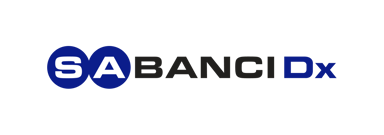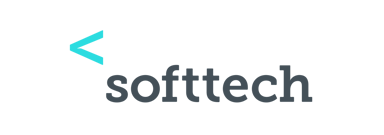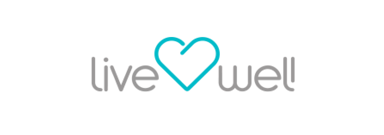
Building a Talent Pipeline - Long-term Recruitment Strategies
HR professionals are always on the lookout for top talent, especially in today’s competitive job market. To stay ahead, it’s important to think beyond just filling current open positions. One really effective strategy is to build a strong talent pipeline. This makes your recruitment process smoother while also ensuring you have a pool of qualified candidates ready for both your immediate and future needs.
Building a talent pipeline takes some work, but it's worth it. 🌟
What is a Talent Pipeline?
Imagine a talent pipeline like a personal pool of potential employees. It's a group of people who are already interested in working for your company and have the skills you need. They're not just any candidates; they're pre-qualified and ready to fill in when a job opening pops up. It's like having your dream team on standby! 🎯
This pool consists of:
- Passive job seekers
- Previous applicants
- Referred candidates
- Interns and apprentices
- Industry professionals you've connected with
Forget scrambling to fill empty seats the moment they appear! A talent pipeline is different. It's like building friendships with awesome people who might want to join your team someday.
By keeping in touch and showing them what your company's about, you create a pool of ready-to-go talent. This way, when a position opens up, you're not starting from scratch. You already know great people who are interested – and that means faster hiring and better fits for your team!
Benefits of Building a Talent Pipeline
Let's talk about the real benefits of building a talent pipeline - it's a game-changer for HR and companies alike.
First, it seriously speeds up hiring. When a position opens, you've got quality candidates ready to go.
You're also more likely to find people who truly fit your company culture. You've had time to assess their skills and potential.
It's cost-effective too. Less reliance on expensive job boards or recruiters.
Your company's reputation gets a boost. Regular engagement with potential hires builds a positive image.
You can plan ahead, identifying talent with skills you'll need in the future.
And importantly, it helps build a more diverse workforce. You have time to cultivate a varied pool of candidates.

Building a Strong Employer Brand
Want to fill your talent pipeline? It all starts with building your employer brand. We're talking about what people imagine when they think about working for you. When your brand is strong, it makes a big difference in attracting, engaging, and keeping top talent. Here's why it's a game-changer 🌟:
- Top Talent Magnet: A stellar reputation makes your organization appealing for skilled candidates.
- Saves You Cash: When people are excited about your company, you can dial back on pricey job ads and headhunters.
- Happy Campers: Employees who like your brand are way more likely to stick around for the long haul.
- Culture Boost: A rock-solid brand helps cement the values that make your workplace tick.
- Win-Win: Companies with strong brands often see higher employee engagement and better performance.
Key Steps in Building a Talent Pipeline
Building a successful talent pipeline involves several key steps:
1. Identify Future Needs
Start by identifying which roles are crucial to your organization’s success and which ones have a high turnover rate. These are the positions where a talent pipeline will be most beneficial.
2. Define Ideal Candidate Profiles
Create detailed profiles of your ideal candidates for these roles. Consider factors such as skills, experience, cultural fit, and career aspirations.
3. Source Potential Candidates
Utilize various channels like social media, professional networks, and employee referrals.
4. Engage and Nurture Relationships
Maintain contact with candidates through newsletters, personalized emails, and invitations to company events. The goal is to keep them engaged and informed about your organization.
5. Assess and Pre-qualify
Develop methods to evaluate candidates' skills and cultural fit before actual vacancies arise.
6. Maintain a Candidate Database
Use an Applicant Tracking System (ATS) or Customer Relationship Management (CRM) tool to organize and track candidates.
Long-term Recruitment Strategies

To build and maintain an effective talent pipeline, consider implementing these long-term strategies:
Develop a strong employer brand. Invest in building a strong employer brand that excites your target candidates. Show your company culture, values, and opportunities through different channels.
Create internship and apprenticeship programs. Encourage young talent and create a pathway for future full-time employees.
Implement employee referral programs. Encourage your current employees to refer candidates from their networks. Employee referrals often result in high-quality hires who are more likely to stay with the company long-term.
Attend industry events and career fairs. Build relationships with professionals and students in your field.
Offer continuous learning opportunities. Provide current employees with professional development opportunities. This helps with retention and also makes sure you have a pool of internal candidates ready to step in.
Maintain alumni networks. Stay connected with former employees who may return or refer others.
Leverage social media. Use platforms like LinkedIn, X, and Instagram to engage with potential candidates and show your employer brand. Regularly posting content related to your industry and company culture can attract passive candidates.
Partner with educational institutions. Partner with universities, colleges, and vocational schools to create a pipeline of entry-level talent.
Measuring the Success of Your Talent Pipeline
To ensure your talent pipeline is effective, it's crucial to track and measure its performance regularly. Here are the Key Performance Indicators (KPIs) to consider:
1. Time-to-hire
This measures the period from when a job is posted to when an offer is accepted. A shorter time-to-hire indicates an efficient pipeline.
2. Quality of Hire
Assess the performance and cultural fit of new hires over time. This can be measured through performance reviews, retention rates, and manager satisfaction surveys.
3. Cost-per-Hire
Calculate the total expenses associated with filling a position, including advertising, recruiter time, and onboarding costs. An effective pipeline should reduce this over time.
4. Candidate Engagement Rates
Track how responsive candidates in your pipeline are to your communications. High engagement rates suggest a well-nurtured pipeline.
5. Pipeline Conversion Rate
Measure the percentage of pipeline candidates who eventually become employees. A higher rate indicates a more effective pipeline.
6. Diversity Metrics
Monitor the diversity of your pipeline in terms of gender, ethnicity, age, and other relevant factors to ensure you're building an inclusive talent pool.
Technology and Tools for Pipeline Management
To manage a talent pipeline effectively, technology plays a crucial role. Here are some essential tools:
Applicant Tracking Systems (ATS)
An ATS like Hirex helps organize candidate information, track applications, and streamline the hiring process. Look for features like:
- Candidate sourcing tools
- Resume parsing
- Automated screening
- Interview scheduling
Customer Relationship Management (CRM)
A CRM designed for recruitment can help manage relationships with potential candidates. Key features include:
- Contact management
- Email campaigns
- Event management
- Candidate nurturing workflows
AI and Machine Learning
Artificial Intelligence and Machine Learning are revolutionizing talent pipeline management:
- Predictive analytics for candidate success
- Chatbots for initial candidate engagement
- Automated skill matching
- Bias detection in job descriptions and screening processes
Data Analytics
Utilize data analytics tools to gain insights into your talent pipeline:
- Pipeline health metrics
- Source effectiveness analysis
- Predictive modeling for future hiring needs
- Diversity and inclusion tracking
By leveraging these technologies, HR professionals can more effectively build, manage, and optimize their talent pipelines.
Building a talent pipeline is like investing in your company's future. It takes time and effort, but it is so worth it. You'll hire more qualified people, save time and money, and stay ahead of the competition.
By following the tips in this post and using the right tools, you can build a strong talent pipeline and place your company for success. Remember, it's not just about filling jobs today; it's about setting your company up for the future. So, start building your pipeline now and secure the rewards! 🚀
Contents
Get a demo
- Quickly find top candidates with smart application management
- Improve team collaboration using built-in communication and workflows
- Offer a smooth candidate experience to strengthen your employer brand
- Count on 24/7 support for a hassle-free hiring process
- Quickly find top candidates with smart application management
- Improve team collaboration using built-in communication and workflows
- Offer a smooth candidate experience to strengthen your employer brand
- Count on 24/7 support for a hassle-free hiring process
"We truly felt the speed difference. Everything was smoother, and candidate feedback was much more positive. It made our jobs easier."

Trusted by 100+ teams
Get Informed,F.A.Q.
Revolutionize your hiring process with our transformative Applicant Tracking System (ATS.)
Suggested Blog Posts

15 Human Resources Startups to Watch in 2026

50 Statistics on Artificial Intelligence in HR
















